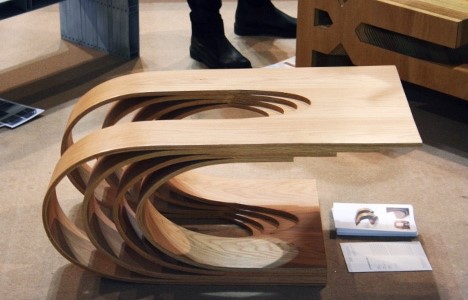Wood is incredibly versatile and can be customised in a myriad number of ways. And one of the most popular methods of moulding timber for various applications is steam bending.
In this guide, we’ll take a look at how steam bending timber works and what uses steam-bent wood can be put to.
The Basics
Steaming wood makes it more malleable, allowing it to be morphed into various shapes. It’s especially useful for industrial usage or in boatbuilding, where curved structures are a necessity.
There’s no one best way to go about it, however, and the method that’s chosen can depend on the quantity of wood being steamed and the type of timber being used.
The Selection Process
As a rule of thumb, some types of wood are better than others when it comes to steam bending. Due to the moisture used during the process, it can often help if the timber you’re using already has a high moisture content.
It’s not the end of the world if it doesn’t though, as pre-soaking treatments can help to prepare it for the process.
Hardwoods tend to be better for steaming than their softwood counterparts and in terms of grain, straight-grained timber is less susceptible to cracks and catastrophic failures during the bending procedure.
According to research by the US Forest Service, the most suitable woods for bending include red and white oak and hackberry, while yellow poplar, soft and hard maple were found to be the least compatible.
Tools of the Trade
At its most basic – steam bending involves putting cuts of wood in a specialised box, which uses steam to transfer heat to the timber – making them more pliable and able to be shaped using jigs and similar equipment.
Boxes: These are typically created from treated wood or PVC and are designed to encapsulate the wood – enabling steam to full permeate the cuts and transfer the necessary heat.
It shouldn’t be air-tight, however, as the steam needs to flow – so it’s common to include air holes to encourage movement and prevent the timber from becoming unsettled.
Boxes commonly include racks for the wood to lie on, as well as a door to facilitate adding and removing cuts as needed.
Generators: These can be as simple as your average kettle or a complex built-for-purpose machine. In either case, it’s linked to a hose that feeds into the steam box. It’s vital that this is secure as interrupting the flow at any stage can negatively affect the procedure.
Thermometer: Adding a thermometer helps keep the heat levels steady, which is vital as under-steaming wood can lead to breakages. In order to prevent this, many veterans opt to test out the apparatus with a few loose cuts before moving on to the main event.
Soaking: Some types of wood can benefit from soaking, which helps facilitate the transfer of heat. This shouldn’t be done immediately beforehand though, as adding water can cause timber to expand. Therefore a generous drying period is necessary between soaking and steaming.
Timing and Temperature
Around 100 degrees Celsius is typically sufficient for saturating the wood and the rule of thumb for timing is an hour for each inch of wood that you need to bend.
Post-steaming
You’ll want to start bending your wood as soon as possible after steaming. This will help prevent fractures and ensure an even flex in the fibres.
Once you’ve positioned it in the desired shape – it’s simply a case of clamping it into place and securing with straps. You’ll want to proceed slowly to ensure no breaks are created by sudden jarring.
After you’re happy with the shape, it’s time to leave the wood to cool and set, which typically takes a day or two.
And You?
If you’ve got any top tips on steam bending or simply want to show off your creations, be sure to get in touch via Twitter – we always love to hear from you.
And if you’re looking for quality treated timber, be sure to check out our massive product range today.
Image Credit: core77.com
